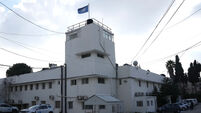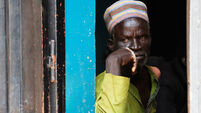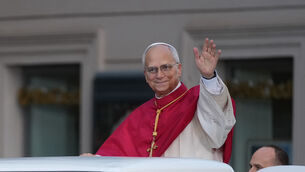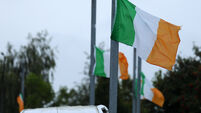Tue, 21 Jan, 2014 - 19:55
[comment] File photo of Syrian government forces, May 2013.[/comment]
Warning: other photos below are of a graphic nature.
Already a subscriber? Sign in
You have reached your article limit.
Subscribe to access all of the Irish Examiner.
Annual €130 €80
Best value
Monthly €12€6 / month
Introductory offers for new customers. Annual billed once for first year. Renews at €130. Monthly initial discount (first 3 months) billed monthly, then €12 a month. Ts&Cs apply.
CONNECT WITH US TODAY
Be the first to know the latest news and updates
CourtsHeathrowPlace: SyriaPlace: New YorkPlace: BerlinPlace: Middle EastPlace: North AfricaPlace: DaraaPlace: LibyaPlace: Orontes RiverPlace: HoulaPerson: David CranePerson: Bashar AssadPerson: CranePerson: AssadPerson: Kenneth RothPerson: Nadim HouryPerson: Deputy DirectorPerson: SyriansPerson: Hamza al-KhatibPerson: Ali FarzatPerson: Muammar GaddafiPerson: Ibrahim QashoushEvent: Balkan warsOrganisation: Syrian governmentOrganisation: Qatar governmentOrganisation: Special CourtOrganisation: Human Rights WatchOrganisation: USOrganisation: RussiaOrganisation: ChinaOrganisation: SyriaOrganisation: SunnisOrganisation: Alawite sectOrganisation: Shiite Islam
![Photo cache reveals brutality in Syria [GRAPHIC CONTENT] Photo cache reveals brutality in Syria [GRAPHIC CONTENT]](/cms_media/module_img/540/270398_1_articlemedium_bn-620416_c3d0d3d3464f4a9e8bf4136ac3172f52.jpg)




![Photo cache reveals brutality in Syria [GRAPHIC CONTENT] Photo cache reveals brutality in Syria [GRAPHIC CONTENT]](/cms_media/module_img/9756/4878075_1_teasersmall_2-82403886-1024x576.jpg)
![Photo cache reveals brutality in Syria [GRAPHIC CONTENT] Photo cache reveals brutality in Syria [GRAPHIC CONTENT]](/cms_media/module_img/9753/4876635_1_teasersmall_2-82573117-1024x576.jpg)








